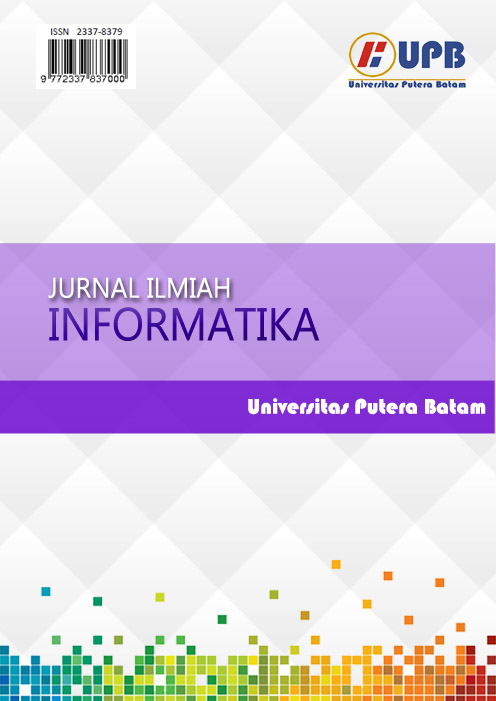PERANCANGAN AUTOMATIC TEMPAT SAMPAH PADA SISTEM ARDUINO UNO R3
DOI:
https://doi.org/10.33884/jif.v11i02.7377Keywords:
Perancangan Otomatis, Tempat Sampah Otomatis, Sensor Arduino R3Abstract
Automatic Design of Trash Cans in the Arduino Uno R3 System is designed for waste management which is often a problem in many cities. Waste management is currently one of the factors that always influences the creation of a clean and healthy environment. Garbage that is always left alone over time will accumulate and pile up so that no one takes care of it, irregular waste is a problem that often occurs. In the waste collection process, which will be carried out by checking the garbage collection sites one by one, the work will be ineffective and inefficient, because it will take a lot of wasted time, even time and money. Furthermore, to simplify the waste disposal process, this can be done at any time, because the process is very easy and can be done or done by anyone. The result is that the ultrasonic sensor is used to capture objects or objects in front of it, then there is a servo motor that can move when someone throws trash, after that there is an LCD display that will display an inscription, after that there is also a mini speaker that makes a sound if someone has finished taking out the trash. So the conclusions that can be studied in this study are how to design an Automatic Trash Can on the Arduino Uno R3 System which can open the lid of the trash can by itself.
References
T. I. Solihati, I. Nuraida, and N. Hidayanti, “Pemanfaatan kardus menjadi tempat sampah pintar berbasis arduino uno R3,” ABDIMAS J. Pengabdi. Masy., vol. 3, no. 2, pp. 342–350, 2020, doi: 10.35568/abdimas.v3i2.962.
S. H. Bere, A. Mahmudi, A. P. Sasmito, and F. T. Industri, “Otomatis menggunakan sensor jarak berbasis arduino,” vol. 5, no. 1, pp. 357–363, 2021.
S. Bere, A. Mahmudi, and A. Panji Sasmito, “Rancang bangun alat pembuka dan penutup tong sampah otomatis menggunakan sensor jarak berbasis arduino,” JATI (Jurnal Mhs. Tek. Inform., vol. 5, no. 1, pp. 357–363, 2021, doi: 10.36040/jati.v5i1.3315.
Arsa priyo rahardjo, suraidi, and Hadian satria utama, “Perancangan tempat sampah pembuka tutup otomatis dan indikator kapasitas arsa priyo rahardjo 1 , suraidi 1 dan hadian satria utama 1,” vol. 19, no. 2, pp. 133–145, 2017.
U. Iwan Purnama, Syaiful Zuhri Harahap, Labuhanbatu, “Rancang bangun tempat sampah otomatis pada universitas labuhanbatu,” vol. 8, no. 2, pp. 1–5, 2020.
D. Nusyirwan, “Tong sampah pintar dengan perintah suara guna menghilangkan perilaku siswa membuang sampah sembarangan di sekolah,” J. Teknoinfo, vol. 14, no. 1, p. 48, 2020, doi: 10.33365/jti.v14i1.336.
J. saputra. Yoyo budiman, Hairul anwar, “Pengertian kabel jumper,” 2021. https://jawabanapapun.com/apa-fungsi-dari-kabel-jumper/
wawan subagjo Bianka lestari, agung gunawan, “Teknik elektronika,” 2021. https://teknikelektronika.com/pengertian-led-light-emitting-diode-cara-kerja/
Eprints.utdi, “Dasar-dasar teori dan tinjuan,” 2022. https://eprints.utdi.ac.id/8946/3/3_173310020_BAB_II.pdf
Sugiono, “Pengertian desain penelitian,” Yayasan pendidikan haji agus salim Universitas medan area, 2021. https://fisipol.uma.ac.id/metode-penelitian/
Syafnidawaty Morissan, “Universitas raharja,” 2021. https://raharja.ac.id/2020/11/04/apa-itu-populasi-dan-sampel-dalam-penelitian/
Downloads
Published
How to Cite
Issue
Section
License
Copyright (c) 2023 JURNAL ILMIAH INFORMATIKA

This work is licensed under a Creative Commons Attribution 4.0 International License.

















